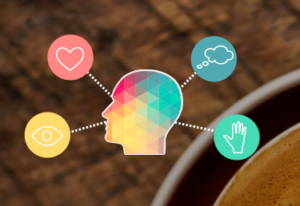Another mapping technique to get into the head and feelings of a user to better understand problems and begin finding solutions.
There are a number of mapping techniques out there for UX people to use and learn about user behavior such as story mapping and journey mapping. And these are very effective in identifying and understanding problems with the entire user experience with a service or product. There is another kind of mapping that doesn’t replace those techniques but be used in conjunction with those mapping techniques. Its called Empathy Mapping and it is widely written about as an excellent way to get in the mind of the user by focusing on what they are thinking, seeing, doing, and feeling.
According to Nielson Norman Group, “the definition of an empathy is a collaborative visualization used to articulate what we know about a particular type of user. It externalizes knowledge about users in order to 1) create a shared understanding of user needs, and 2) aid in decision making.” While best used at the beginning of the design process after user research, it is an incredibly helpful technique that can be used continuously throughout the design process. The collaborative experience allows design and engineering teams to find common ground on what user needs must be addressed and which ones are the priority. They are also great because they are cheap and fast to do. They serve as a guide in constructing the user persona if there isn’t one already.
What does it look like?
It doesn’t require much effort or materials to create an empathy map. The most basic tools are needed: whiteboard (or large sheets of paper), post its, writing utensil, qualitative research data, user personas, and your team. The map is divided into quadrants, each is labeled with an empathy category such as feeling, thinking, saying, hearing, as well as pain and gain points. At the very center of the map is the user persona and every category stems from it.
These maps take many forms but usually always include the categories above. The simple format makes it easy-to-digest the user persona’s attitudes and behaviors.
The Benefits
There are several benefits by employing this technique according to Jennifer Leigh Brown’s article Empathy Mapping: A Guide to Getting Inside a User’s Head which are:
- A better understanding of the user
- Distilled information in one visual reference
- Callouts of key insights from research
- Fast and inexpensive
- Easily customizable based on available information and goals
- Common understanding among teams
The wonderful thing about this mapping method is that it can tell a lot about not just the user but also if more research is necessary. According to Alli Ligget’s How To Create An Empathy Map (And Why You Should), “Iterate and improve. An empathy should evolve over time. Iterate and revise as needed based on new data or customer insights.” If the workshop session ends with sparsely populated whiteboards or reveals more questions then it indicates further works needs to be done within user research. Another thing that is important to know about it is that it can’t replace journey mapping. Its purpose is to only provide a focused view of a target persona as there is not enough width to envision designing for the entire user experience.
I believe that while this kind of mapping may take up some time it suggests a true devotion, by designers, to improving the whole experience. Having to spend time really thinking as this single or even multiple user personas, seeing the problems from their point of view – that sounds like a dedicated design team. According to Brown, it “helps participants consider things from the user’s perspective along with their own goals and challenges.” Many times a user persona is created, then a journey map or vice versa, and designing the experience as a whole takes over with more emphasis on process and design. The user persona thoughts and feelings could end up being lost or forgotten. Taking the time to get to know a user persona intimately in this manner means their insights are more likely to stick with you when making decisions or creating solutions.


